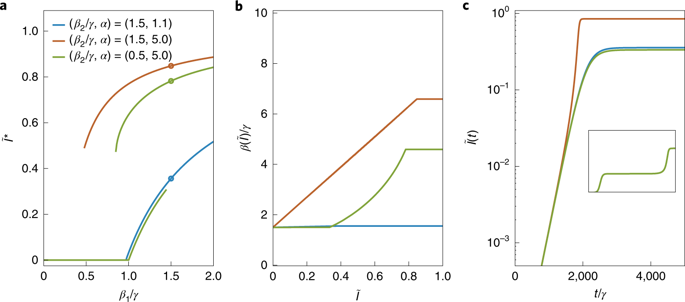Nature Physics ( IF 17.6 ) Pub Date : 2020-02-24 , DOI: 10.1038/s41567-020-0791-2 Laurent Hébert-Dufresne 1, 2, 3 , Samuel V Scarpino 4, 5, 6, 7, 8, 9 , Jean-Gabriel Young 10

|
From ‘fake news’ to innovative technologies, many contagions spread as complex contagions via a process of social reinforcement, where multiple exposures are distinct from prolonged exposure to a single source1. Contrarily, biological agents such as Ebola or measles are typically thought to spread as simple contagions2. Here, we demonstrate that these different spreading mechanisms can have indistinguishable population-level dynamics once multiple contagions interact. In the social context, our results highlight the challenge of identifying and quantifying spreading mechanisms, such as social reinforcement3, in a world where an innumerable number of ideas, memes and behaviours interact. In the biological context, this parallel allows the use of complex contagions to effectively quantify the non-trivial interactions of infectious diseases.
中文翻译:

相互作用传染的宏观模式与社会强化没有区别
从“假新闻”到创新技术,许多传染病通过社会强化过程以复杂的传染病形式传播,其中多重接触不同于长期接触单一来源1。相反,埃博拉或麻疹等生物制剂通常被认为是作为简单的传染病传播的2。在这里,我们证明,一旦多种传染病相互作用,这些不同的传播机制可能会产生难以区分的群体水平动态。在社会背景下,我们的结果凸显了在无数想法、模因和行为相互作用的世界中识别和量化传播机制(例如社会强化3 )的挑战。在生物学背景下,这种相似性允许使用复杂的传染病来有效地量化传染病的重要相互作用。











































 京公网安备 11010802027423号
京公网安备 11010802027423号